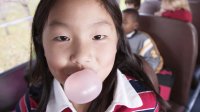Rules and Routines in the Classroom
An argument for keeping hard rules to a minimum.
Your content has been saved!
Go to My Saved Content.I admit it: I allowed students to chew gum in class. Why? Because I chewed gum. I have a throat that tends to get dry after mid-morning, and gum helps.
The point is that if you have a rule, you have to follow it yourself or the kids will question you, and worse, may lose respect. No food allowed in the classroom and you eat a blueberry scone during class every morning? I learned from experience. The beauty of teaching 16- and 17-year-olds is that they don’t often hold back their opinions. Being a model for what we expect is at times inconvenient and exhausting, but it comes with the job.
Follow Through
Rules have consequences, and routines have reminders. What worked for me was far fewer rules and many, many more routines and procedures.
Once you make a rule, you have to stick with it. Students will expect a warning, a second warning, and then a consequence. A rule cannot be treated like a routine ever. If being on time is a classroom rule, for example, when a student walks in 22 seconds late, we can’t say, “I reminded you yesterday about being tardy”—we have to say, “This is a warning and a consequence will follow.” And then, a consequence has to follow if they walk in two seconds late two days later.
All the other students are watching and expecting the follow through. If we just sigh, shake our head, and let it slide, students will not see being on time as a rule. We need to be selective when choosing that small handful of rules because those will need to be enforced.
Choosing Routines to Emphasize
There will be procedures and routines that will take several seconds to go over and others that are more in-depth. The ones that take extra effort to explain and model are often those that are border on being rules, like getting out of your seat.
You’ll want to address all scenarios for getting out of one’s seat: sharpening a pencil, getting supplies or a tissue, turning in work, etc. I always told students, “If you’re up, you are on a mission,” which sets it up nicely: If you see a student wandering a bit or stopping at a classmate’s desk for an off-topic chat, ask, “What’s your mission?” This serves as a gentle reminder. The key word here is reminder—this kind of situation doesn’t need a consequence.
There isn’t really a limit to how many routines and procedures you have, but you’ll need to make sure each one is clear to every learner in your room.
Transparency
Be it a rule or a routine, kids have to know what it looks like, with examples, on day one. If a rule is a general, all-encompassing one like “be respectful to all,” you’ll have to give numerous examples of what that looks like—and what it doesn’t look like.
Have the class brainstorm examples and add a few yourself. Some of the things we expect students to bring up: no name-calling or putdowns, and hands to yourselves. However, students always brainstorm things beyond what we can imagine, so it’s important that they’re part of this process. It gives a keener understanding of the rules for the class collectively.
Every time we decide to involve students in the decision-making or discovery process in the classroom, it takes considerably longer. We’re often tempted to just give them the information. But exploring examples of what the rules and routines look like together gives students ownership around these agreements, which will pay off the entire school year.
The Ultimate Goal
Of course, the ultimate goal of teaching is not enforcing rules and routines but teaching effectively. And when teachers are together, we spend most of our time talking not about classroom management, but about effective teaching. When we’re effective, the majority of kids are learning and getting what they need, goals and objectives are achieved, and we teachers feel an incredible sense of accomplishment.
������’s . It comes from education author and speaker Harry Wong, whose book The First Days of School is a popular tome in our profession, with wonderful strategies for teaching effectively and setting up structures and community in the classroom at the beginning of the year.
